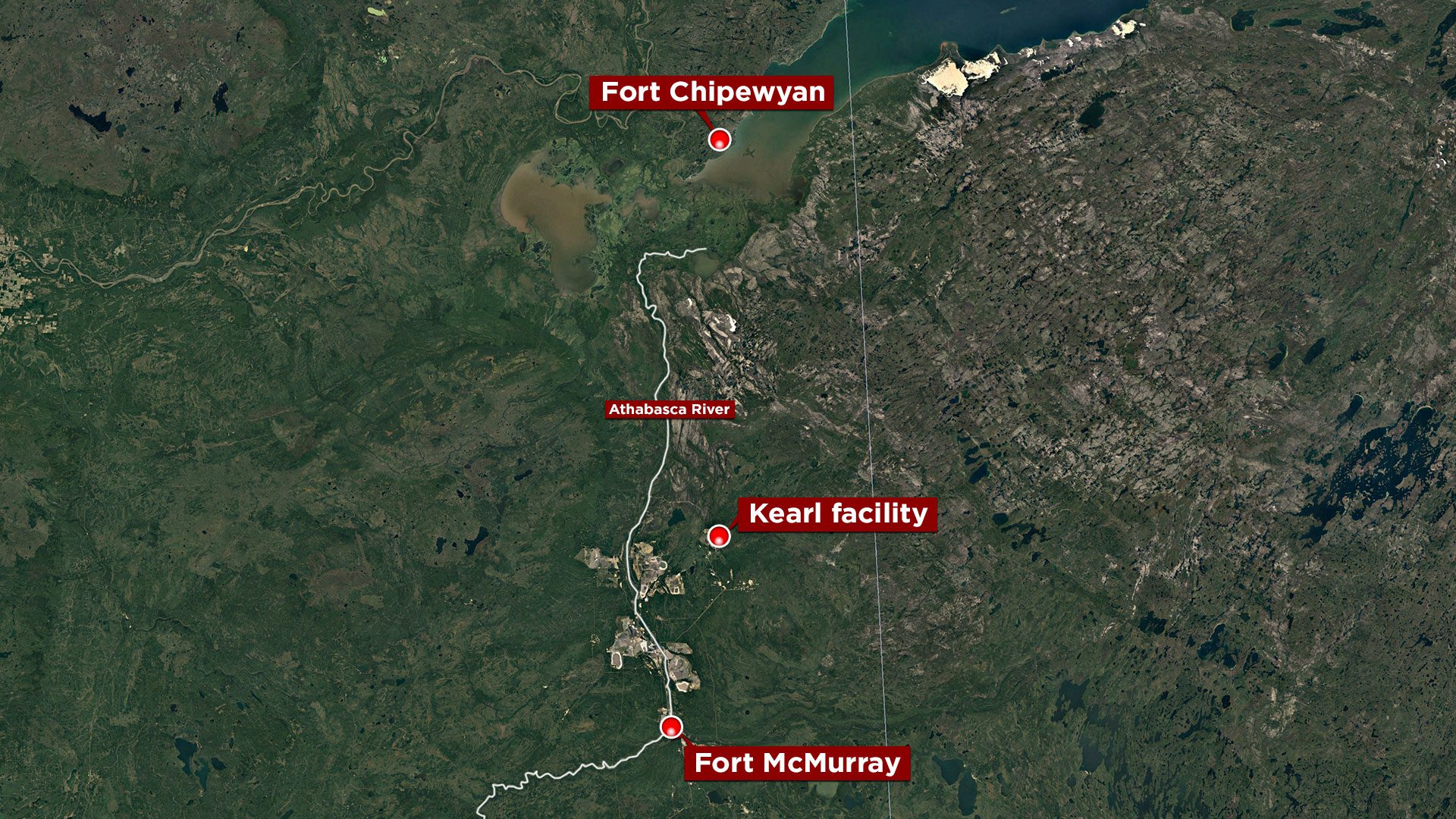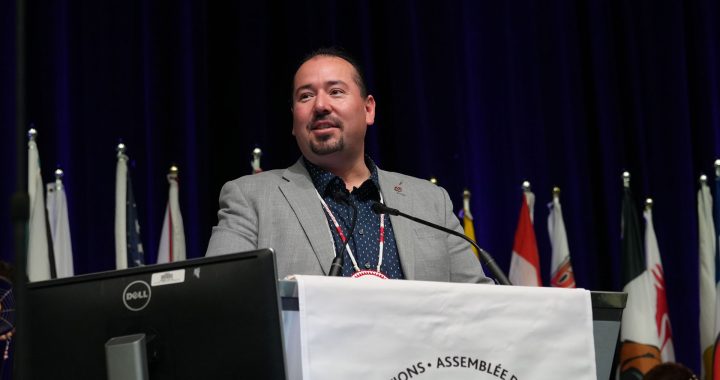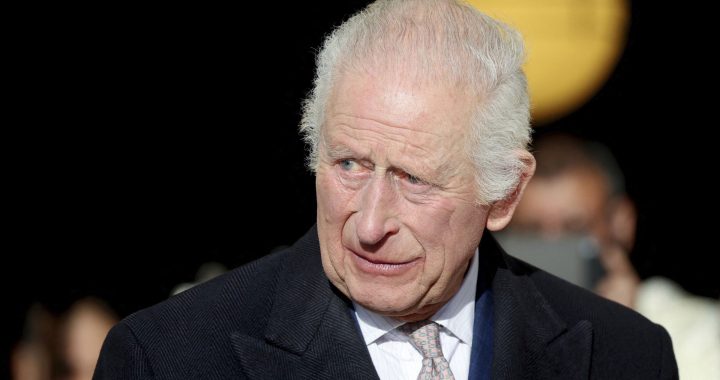Three weeks and one community hall meeting later, Fort Chipewyan residents are still grappling with concerns about contaminants in the water as a spring thaw approaches.
Two Mikisew Cree Nation residents, Calvin Walquan and his partner Skye Stonechild came to the community hall with their young children to express their frustration about the discovery that there have been ongoing tailings pond leaks from an Imperial Oil mine site.
“The self-monitoring and self-reporting is a broken system…we have been trying to get ourselves at the table but it is not happening,” said Walquan.
Kearl mine is about 300 km south of Fort Chipewyan where many members of the Mikisew Cree Nation, Fort Chipewyan Metis Nation and Athabasca Chipewyan First Nation (ACFN) live.

Since news broke in early March that there had been both a large overflow of 5.4 million litres of tailings pond water—water that contains dangerous levels of arsenic, heavy metals and hydrocarbons—local residents have been deeply concerned about potential impacts to fish, wildlife and water quality.
Water is always on the minds of residents, possibly because it surrounds the small community of less than 1,000. Fort Chipewyan is on the north shore of the 283 km long Athabasca river which is fed by surrounding rivers and tributaries.

Walquan came in to the Imperial Oil town hall meeting with a blue jug filled with the community’s water and a container of oil, the type you would buy from a gas station.
“Drink up, there’s plenty for everyone,” Waquan yelled as he entered.
He walked up to the podium where Jamie Long, vice president of mining for Imperial Oil had been fielding questions and comments from angry Fort Chipewyan residents.
He was not assured by Imperial Oil’s community bulletin, nor their comments at the meeting saying that the water was safe to drink in Fort Chipewyan.
Imperial Oil told APTN News that so far, their tests show no elevated levels of tailings pond chemicals in the surrounding water. First Nations monitors are also working to confirm these findings.
“My kids that are in the back have to live with this for the next generation to come. Can you tell the future? Are you a scientist or a health professional?” Waquan said.
“Can you tell you us the cumulative effect of what is going to happen in industry and to our traditional way of life?”
He told the room that he had planned to spill the oil on the video projector used by Imperial Oil, but chose not to because some of the slides depicted First Nations traditions.
Read More
‘We are probably going to be the first oil sands environmental refugees’
Waquan and Stonechild said they have been using water that has been shipped in ever since news of the leaks.
“My kokum was right—we are going to be pitiable people one day. Our water and our way of life will be gone,” Waquan told APTN.
“This year I don’t want to catch fish, I don’t want to catch ducks.”

ACFN has also been monitoring the area and have recorded video that they say shows that animals, including moose, are active by one of the spill sites.
Mikisew Tech and Indigenous Services Canada (ISC) have been trucking in water for Mikisew Cree First Nation members. ISC committed to supplying bottled water for Fort Chipewyan residents who are concerned about contaminants.
The intake pipe for the hamlet’s water froze over the night of the community meeting and the Regional Municipality of Wood Buffalo worked overnight to make sure that it was open again, according to an ACFN spokesperson.
Residents of Fort Chipewyan asked Imperial Oil for assistance in moving the intake pipe 20 kilometers from where it currently sits at the mouth of lake Athabasca. Multiple rivers in the area drain into the lake including the Fire Bag River, which is three km from the Kearl leak site.
There were no commitments made at the meeting.

Georgina Cardinal, 67, is a Métis woman who taught Cree at the local school for over 30 years.
She is retired but filling in at the Fort Chipewyan bicentennial museum for the day. She told APTN that she had recently recovered from a stomach infection.
Her infection happened after concerns about the quality of the drinking water began.
“So what are we looking at there, are we looking at the water being contaminated?” asked Cardinal.
That makes her another community member who is not reassured by Imperial Oil’s statements that there is no evidence of contamination.
“I went to the health clinic. They said it could be from contaminated water or food,” said Cardinal.
She said she doesn’t remember hearing that her grandparents had these concerns, so she can’t help but wonder if resource extraction has made illness more common in her community.
“I got really sick. I had to go to [Fort] McMurray because they put me on antibiotics. I didn’t really know what was wrong,” said Cardinal “I had H. pylori and they are supposed to do another test to make sure it is clear.”
According to John Hopkins Medical- (link website) Helicobacter pylori, or H. pylori is a type of bacteria that infects the stomach. It is common and many people have the bacteria with no symptoms but it is also a main cause of ulcers.
“That was scary and they say there’s quite a few people in Fort Chip that have it,” said Cardinal.

Jean L’Hommecourt’s is co-chair for Keepers of the Water, an Indigenous-led non profit based in northern Alberta.She grew up in Fort Chipewyan and attended Holy Angels’ Residential School for six years. She came back today to attend the town hall.
She spoke to APTN on the forest dock standing on the frozen-over lake, a place that she almost drowned as a teenager.
“But I know now I lived because I had a purpose… and it is to protect the water,” said L’Hommecourt.
L’Hommecourt said she came up in person in order to get some information about the leaks.
“The recent Imperial tailings breach has impacted me majorly as I do have a cabin that is 13 kilometers away from the imperial tailing pond… and to date I haven’t spoke to any representative at all from Imperial.”
Her cabin is also the site of a trapline passed down through her family. It is still a place where L’Hommecourt practices her traditions: hunting, fishing and preparing hides.
It concerns her that even three weeks after other communities have been notified she still hasn’t heard anything from Imperial.
“They haven’t given any consideration to give me time to voice my concerns. I was angry I was hurt…I felt that I wasn’t valued enough as a human being.”
Imperial Oil has committed to further community meetings but no date has been set.










